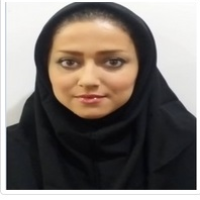Exploring and analyzing symbolic images (Case study: Stone deposits of South Khorasan Province)
The primitive man painted the wall of the caves and rocks by depicting his beliefs and taking advantage of their living environment. These motifs have been a way of conveying messages and thoughts and a means of expressing human dreams and fears. For this reason, sculptures are one of the oldest artifacts found in the world that tell a great deal about the life and customs of our ancestors. The creators of this art have painted these engravings and paintings that express their beliefs and beliefs and myths, but today we are not among the creators of these artworks to ask what their purpose was to create these works. Therefore, the purpose of this study is to identify a number of prominent motifs in South Khorasan province and to compare them with other symbolic artifacts found in Iran, which in part, have achieved the symbolic meaning of these motifs that came from the secrets of human beings before us. We have studies of carvings are of great importance in two ways: 1) The distribution and number of carvings and paintings throughout the world, 2) The direct connection of these motifs with the lives of the people of the past. Therefore, in the studies of petroglyph of Iran, only these paintings have been studied and introduced and it is noteworthy that among these motifs, only animal motifs have been analyzed. And the symbolic motifs remain still unknown. Therefore, recording and studying the symbolic motifs in Southern Khorasan province in completing the studies of petroglyphs of Iran is very important since it is comparable to other parts of the country. The beliefs of past peoples living in this region have been discovered with motifs. In the geographical area of this research, South Khorasan, out of the twenty areas, 14 sites have been discovered with symbolic motifs; the carvings on this province have been discussed. Indicative locations that contain the motifs are the Folklore: Bijayem, Tangel Estad, Dudameh, Makhunik, Ramangan 1, Khuzan, Daldel Lach, Aso, Kafar Kuh, Chaharmahal Lach, Mount Gerdokchak, Nakhlistan and Kal Hessina. The research method was library and field research. At first, the field method identified the areas. Then, all the landscapes were photographed in different directions. Then, the design of the motifs was done using Corel software. In the library method, all the symbolic motifs have been studied, studied and compared with other motifs found elsewhere in Iran. Then, an analysis of the factors influencing the formation of motifs in specific areas has been included in the field of anthropology and ethnography, and finally, a suggested chronology for each site has been included; a review of documents, historical texts, and backgrounds of studies was also used. A total of 210 symbolic and geometric patterns were found in South Khorasan Province, each representing a specific meaning. Symbolic paintings are, in fact, a common language that depicts the values and beliefs of people of ancient times. In the exponential art of stone carvings in the province, the painter has created the motifs with simplicity, without any ornament, indicating that, despite their settling, hunting or farming life, they came from some sort of unconscious belief and ritual. The inscriptions are petroglyph-style motifs, both individually and collectively. The existence of early roles and their execution on one another, as well as the later inscriptions, suggest that the depiction of this precious stone has continued from time immemorial to years later, and each language has its creators. Therefore, it is noteworthy that these motifs are comparable and comparable to other motifs found in and outside Iran. The cryptography of these people in the creation of the motifs is quite evident, and with these works they have revealed a word about their needs. Deciphering these works is possible by a careful examination of the ancient needs, early rituals, mythology and ancient speculation. Designed as sacred places, these motifs were spell-bound and used to worship natural gods; drawing them depicts man's beliefs and needs; he contemplates measures to protect against natural disasters, they have been resorting to these pictures.
- حق عضویت دریافتی صرف حمایت از نشریات عضو و نگهداری، تکمیل و توسعه مگیران میشود.
- پرداخت حق اشتراک و دانلود مقالات اجازه بازنشر آن در سایر رسانههای چاپی و دیجیتال را به کاربر نمیدهد.



